Related Research Articles

The Emancipation Proclamation, officially Proclamation 95, was a presidential proclamation and executive order issued by United States President Abraham Lincoln on January 1, 1863, during the American Civil War. The Proclamation changed the legal status of more than 3.5 million enslaved African Americans in the secessionist Confederate states from enslaved to free. As soon as slaves escaped the control of their enslavers, either by fleeing to Union lines or through the advance of federal troops, they were permanently free. In addition, the Proclamation allowed for former slaves to "be received into the armed service of the United States".

John Murray, 4th Earl of Dunmore was a British peer, military officer and colonial administrator in the Thirteen Colonies and The Bahamas. He was the last royal governor of Virginia. Dunmore was named governor of New York in 1770. He succeeded to the same position in the colony of Virginia the following year, after the death of Norborne Berkeley, 4th Baron Botetourt. As Virginia's governor, Dunmore directed a series of campaigns against the trans-Appalachian Indians, known as Lord Dunmore's War. He is noted for issuing a 1775 document, Dunmore's Proclamation, offering freedom to any enslaved person who fought for the British Crown against Patriot rebels in Virginia. Dunmore fled to New York after the burning of Norfolk in 1776 and later returned to Britain. He was Governor of the Bahamas from 1787 to 1796.

Loyalists were colonists in the Thirteen Colonies who remained loyal to the British Crown during the American Revolutionary War, often referred to as Tories, Royalists or King's Men at the time. They were opposed by the Patriots, who supported the revolution, and called them "persons inimical to the liberties of America."

Titus Cornelius, also known as Titus, Tye, and famously as Colonel Tye, was a slave of African descent in the Province of New Jersey who escaped from his master and fought as a Black Loyalist during the American Revolutionary War; he was known for his leadership and fighting skills. He fought with a volunteer corps of escaped Virginia Colony slaves in the Ethiopian Regiment, and he led the Black Brigade associators. Tye died from tetanus from a musket wound in the wrist following a short siege in September 1780 against Captain Joshua Huddy. He was one of the most feared and effective guerrilla leaders opposing the American patriot forces in central New Jersey.
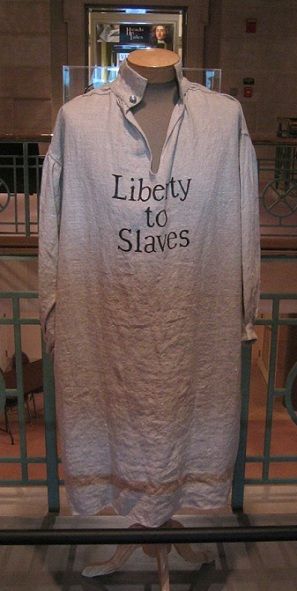
Black Loyalists were people of African descent who sided with the Loyalists during the American Revolutionary War. In particular, the term refers to men who escaped enslavement by Patriot masters and served on the Loyalist side because of the Crown's guarantee of freedom.

The southern theater of the American Revolutionary War was the central theater of military operations in the second half of the American Revolutionary War, 1778–1781. It encompassed engagements primarily in Virginia, Georgia, North Carolina, and South Carolina. Tactics consisted of both strategic battles and guerrilla warfare.
Thomas Peters, born Thomas Potters, was a veteran of the Black Pioneers, fighting for the British in the American Revolutionary War. A Black Loyalist, he was resettled in Nova Scotia, where he became a politician and one of the "Founding Fathers" of the nation of Sierra Leone in West Africa. Peters was among a group of influential Black Canadians who pressed the Crown to fulfill its commitment for land grants in Nova Scotia. Later they recruited African-American settlers in Nova Scotia for the colonisation of Sierra Leone in the late eighteenth century.

Women in the American Revolution played various roles depending on their social status and their political views.

The Battle of Kemp's Landing, also known as the Skirmish of Kempsville, was a skirmish in the American Revolutionary War that occurred on November 15, 1775. Militia companies from Princess Anne County in the Province of Virginia assembled at Kemp's Landing to counter British troops under the command of Virginia's last colonial governor, John Murray, Lord Dunmore, that had landed at nearby Great Bridge. Dunmore was investigating rumors of Patriot troop arrivals from North Carolina that turned out to be false; he instead moved against the Princess Anne militia, defeating their attempt at an ambush and routing them.
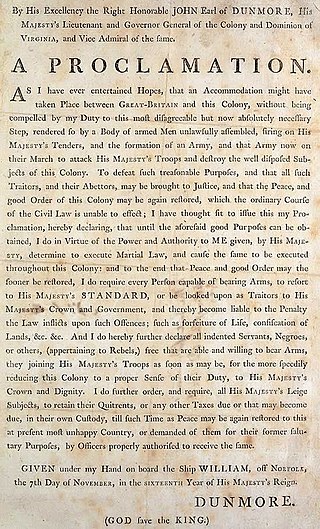
Dunmore's Proclamation is a historical document signed on November 7, 1775, by John Murray, 4th Earl of Dunmore, royal governor of the British colony of Virginia. The proclamation declared martial law and promised freedom for slaves of American Patriots who left their owners and joined the British army, becoming Black Loyalists. The same right was offered to indentured servants. Most relevant historians agree that the proclamation was chiefly designed for practical rather than moral reasons.
Harry Washington was a Black Loyalist in the American Revolutionary War, and enslaved by Virginia planter George Washington, later the first President of the United States. When the war was lost the British then evacuated him to Nova Scotia. In 1792 he joined nearly 1,200 freedmen for resettlement in Sierra Leone, where they set up a colony of free people of color.
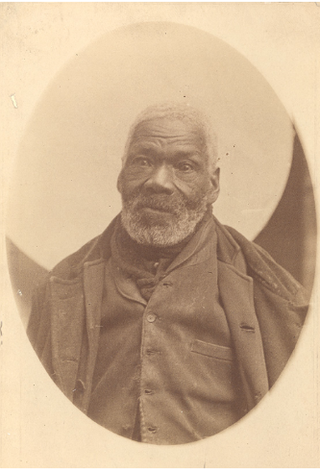
Black refugees were black people who escaped slavery in the United States during the War of 1812 and settled in Nova Scotia, New Brunswick, and Trinidad. The term is used in Canada for those who settled in Nova Scotia and New Brunswick. They were the most numerous of the African Americans who sought freedom during the War of 1812. The Black refugees were the second group of African Americans, after the Black Loyalists, to flee American enslavement in wartime and settle in Canada. They make up the most significant single immigration source for today's African Nova Scotian communities. During the antebellum period, however, an estimated 10,000 to 30,000 Black refugees reached freedom in Canada, often traveling alone or in small family groups.

In the American Revolution, gaining freedom was the strongest motive for Black enslaved people who joined the Patriot or British armies. It is estimated that 20,000 African Americans joined the British cause, which promised freedom to enslaved people, as Black Loyalists. Around 9,000 African Americans became Black Patriots.
The Black Company of Pioneers, also known as the Black Pioneers and Clinton's Black Pioneers, were a British Provincial military unit raised for Loyalist service during the American Revolutionary War. The Black Loyalist company was raised by General Sir Henry as a non-combatant replacement force for the disbanded Ethiopian Regiment in Philadelphia in late 1777 or early 1778. Pioneers were soldiers employed to perform engineering and construction tasks. In 1778, the Pioneers merged into the Guides and Pioneers, led by Colonel Beverley Robinson in New York. Its company commanders were Captain Allen Stewart and Captain Donald McPherson. In 1783, the company was disbanded in Port Roseway, Canada, now Shelburne, Nova Scotia.

Black Patriots were African Americans who sided with the colonists who opposed British rule during the American Revolution. The term "Black Patriots" includes, but is not limited to, the 5,000 or more African Americans who served in the Continental Army and Patriot militias during the American Revolutionary War.
The Ethiopian Regiment, better known as Lord Dunmore's Ethiopian Regiment, was a British colonial military unit organized during the American Revolution by the Earl of Dunmore, last Royal Governor of Virginia. Composed of former slaves who had escaped from Patriot masters, it was led by British officers and sergeants. The regiment was disbanded in 1776, though many of its soldiers probably went on to serve in other Black Loyalist units.

Slavery in Maryland lasted over 200 years, from its beginnings in 1642 when the first Africans were brought as slaves to St. Mary's City, to its end after the Civil War. While Maryland developed similarly to neighboring Virginia, slavery declined here as an institution earlier, and it had the largest free black population by 1860 of any state. The early settlements and population centers of the province tended to cluster around the rivers and other waterways that empty into the Chesapeake Bay. Maryland planters cultivated tobacco as the chief commodity crop, as the market for cash crops was strong in Europe. Tobacco was labor-intensive in both cultivation and processing, and planters struggled to manage workers as tobacco prices declined in the late 17th century, even as farms became larger and more efficient. At first, indentured servants from England supplied much of the necessary labor but, as their economy improved at home, fewer made passage to the colonies. Maryland colonists turned to importing indentured and enslaved Africans to satisfy the labor demand.

Colonists who supported the British cause in the American Revolution were Loyalists, often called Tories, or, occasionally, Royalists or King's Men. George Washington's winning side in the war called themselves "Patriots", and in this article Americans on the revolutionary side are called Patriots. For a detailed analysis of the psychology and social origins of the Loyalists, see Loyalist.
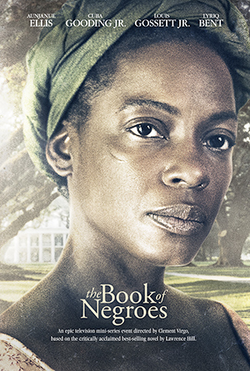
The Book of Negroes is a 2015 television miniseries based on the 2007 novel of the same name by Canadian writer Lawrence Hill. The book was inspired by the British freeing and evacuation of former slaves, known as Black Loyalists, who had left rebel masters during the American Revolutionary War. The British transported some 3,000 Black Loyalists to Nova Scotia for resettlement, documenting their names in what was called the Book of Negroes.
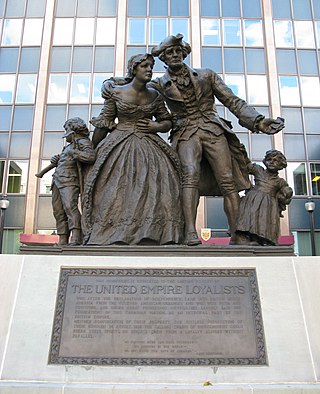
Deborah Squash was a slave on George Washington's Mount Vernon plantation before she escaped in 1781. She went to New Amsterdam, which was the headquarters for the British during the American Revolution. At the end of the war, she was one of the 3,000 blacks in the Book of Negroes that sailed on a British ship for Nova Scotia.
References
- ↑ Carnahan, Burrus M. (2007). Act of Justice: Lincoln's Emancipation Proclamation and the Law of War . University Press of Kentucky. pp. 18. ISBN 978-0-8131-2463-6.
- ↑ "REVOLUTIONARY WAR3/Sir Henry Clinton's Philipsburg Proclamation, June 30, 1779.jpg" . Retrieved 2007-10-07.
- ↑ "Proceedings of the Massachusetts Historical Society". The Society. July 5, 1863 – via Google Books.
- ↑ "The Philipsburg Proclamation". Archived from the original on 2007-11-17. Retrieved 2007-10-07.
- ↑ Hilvers, Julie. "Freedom Bound: Black Loyalists". Archived from the original on November 23, 2007. Retrieved 2007-10-07.
- ↑ "Who were the Black Loyalists?". Archived from the original on 2007-10-24. Retrieved 2007-10-07.
- ↑ Poplack, Shana (2001). African American English in the Diaspora. Blackwell Publishing. pp. 41–42. ISBN 0-631-21266-3.
- ↑ Davis, David Brion (2006). Inhuman Bondage: The Rise and Fall of Slavery in the New World . Oxford University Press. p. 150. ISBN 0-19-514073-7.
- ↑ Brown, Christopher Leslie (2006). Arming Slaves: From Classical Times to the Modern Age . Yale University Press. pp. 190. ISBN 0-300-10900-8.
- ↑ "Who were the Black Loyalists?". Archived from the original on 2007-10-24. Retrieved 2007-10-07.
- ↑ Brooks, Joanna (2002). Face Zion Forward: First Writers of the Black Atlantic, 1785–1798 . UPNE. pp. 6. ISBN 1-55553-540-2.